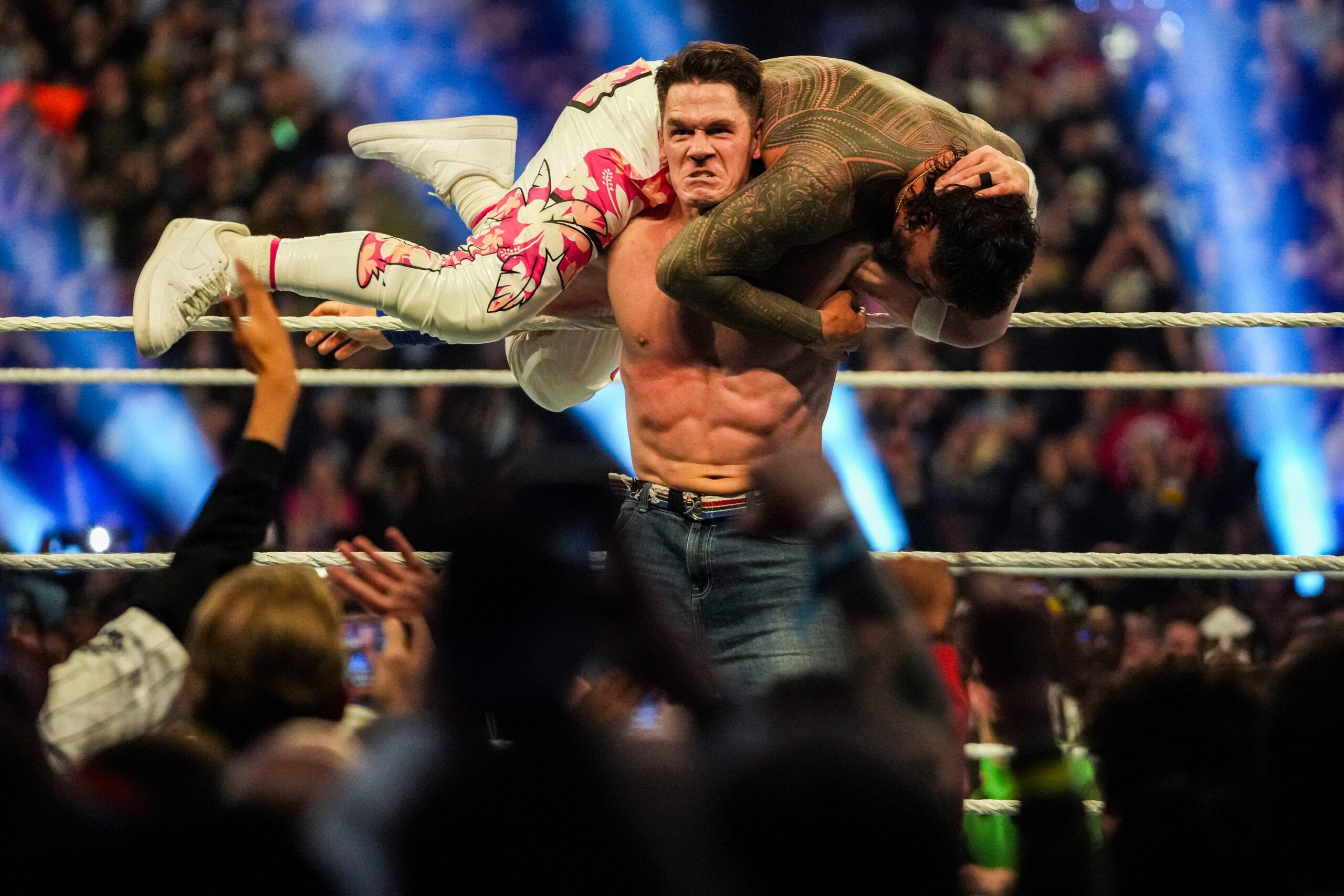When John Cena finally turned heel at Elimination Chamber, it wasn’t the moment fans had once begged for; it was something different. This shift came after years of being the company’s face, polarizing crowds, and carrying the WWE brand through eras of transition. Though uneven at times, Cena’s heel turn ultimately served a higher purpose: setting the stage for one of the most beloved babyface runs in WWE history for his retirement tour.
This article is written by new Ringside Intel contributor Matt Kelley. Listen to the Wrestle Matts podcast here.
The Heel Turn That Was and Wasn’t
Let’s be honest: parts of Cena’s heel turn fell flat. The Rock and Travis Scott bailed out. The snarky promos, the slow match pace, and the subtle tweaks to his character often felt like half-measures. For years, fans chanted “Cena sucks” not out of genuine hatred, but out of frustration with his invincibility and perceived pandering. The moment was decisive when the heel turn came, but the run itself lacked the venom of a Roman Reigns transformation. Perhaps that’s due to time limitations, as Cena is now down to only a handful of dates.
Instead of a complete villainous reinvention, Cena’s heel period functioned more like a mirror, reflecting the audience’s long-held resentment back at them. He mocked the very fans who had booed him for a decade, leaned into the ‘my time is now’ selfish stigma, and wrestled with a controlled arrogance. It wasn’t flashy, but it was real.
And it laid the groundwork for something greater.
The Legend Forged in Reflection
Cena’s heel run made people miss the old Cena.
By embracing the corporate persona and shedding the self-effacing charm, WWE prompted fans to reassess Cena’s true essence. They began to recall the tireless Make-A-Wish visits, the workhorse ethic, and the consistent match quality, traits that, when absent, left a void.
More significantly, it humanized him. Once depicted as an invincible superhero, heel Cena was now flawed, conflicted, and vulnerable. This was evident when Cena started to question himself in promos and in matches, a trait that often defines a legendary babyface in wrestling.
The Brock Lesnar Factor
Then came SummerSlam and the return of the beast, Brock Lesnar.
The Beast Incarnate, fresh off a hiatus and now a chaos agent, stepped back into the picture just as Cena began to tilt toward redemption. Lesnar isn’t just a physical threat but a symbol of WWE’s brutal, unsentimental landscape.
When Lesnar annihilated Cena with an F5 after Cena had what was arguably an all-time great match against Cody Rhodes, it made Cena an underdog after just minutes being Superman. The once-indestructible face of WWE was left lying in the middle of the ring in front of a stunned crowd.
And that’s what made fans feel for Cena again.
A Hero Rebuilt
The heel turn may not have reinvented Cena, but it recalibrated the audience. It reminded everyone why they cared in the first place. And by the time he returned to full babyface status, he wasn’t just “Super Cena”; he was a legend, nearly at the sunset of his career, facing a profound nemesis.
His final feud with Lesnar will be about legacy, humility, and the long road back to the top, not for gold, but for respect.
In wrestling, respect is the currency of immortality.
